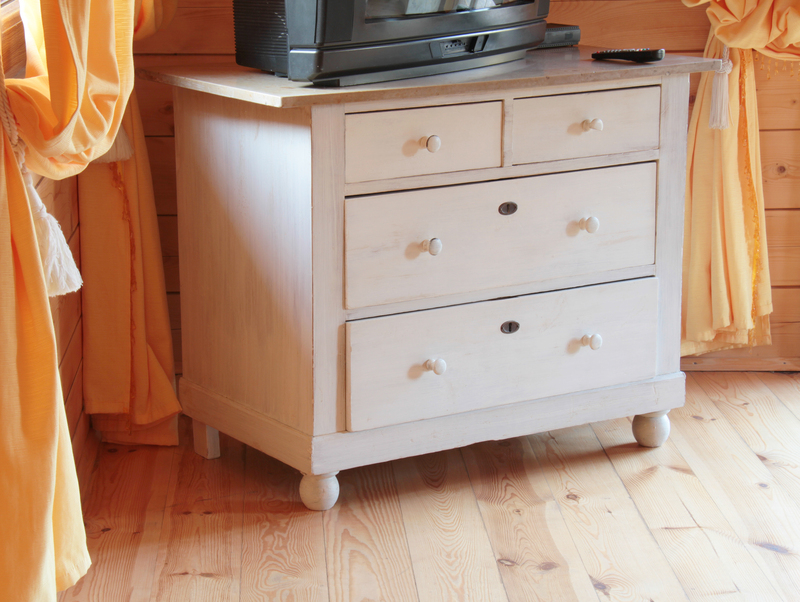Eco-Friendly Tips for Recycling Old Cookware at Home
In a world increasingly focused on sustainability, finding ways to recycle and repurpose household items is more important than ever. Old pots, pans, and baking dishes often end up gathering dust or cluttering landfills, but with a little creativity and knowledge, you can dispose of them in ways that are both environmentally friendly and surprisingly useful. This comprehensive guide will explore multiple ways to recycle old cookware at home, offering practical tips and eco-friendly strategies to help you minimize waste and make the most of your unwanted kitchen items.
Why Recycling Old Cookware Matters
Cookware recycling is an often-overlooked aspect of kitchen management. An average household replaces several pieces of kitchenware every few years, contributing significantly to landfill waste. Cookware such as cast iron pans, nonstick skillets, aluminum pots, and stainless steel utensils are made of valuable resources that could have a second life if properly recycled or repurposed.
- Reduces environmental impact by decreasing landfill contributions
- Conserves natural resources
- Minimizes energy consumption associated with producing new cookware
- Encourages a zero-waste kitchen lifestyle

Understanding the Materials in Your Old Cookware
Before you begin recycling cookware, it's important to understand what it's made from. Most household pots and pans are crafted from materials such as:
- Stainless Steel
- Cast Iron
- Aluminum
- Copper
- Nonstick or Teflon-Coated Cookware
- Ceramic or Glass
Each material may require a different approach to ensure recycling is done both safely and efficiently.
Identifying Recyclable vs. Non-Recyclable Cookware
Not all cookware can be recycled in your curbside bin. For example, ceramic and glass items generally require special handling, as do pots and pans with nonstick coatings. Check your local recycling regulations and remember:
- Metal cookware (stainless steel, aluminum, copper, cast iron) is typically recyclable, though sometimes only at dedicated scrap metal centers.
- Nonstick coatings may disqualify cookware from traditional metal recycling--remove the coating if possible.
- Containers with plastic handles or lids should have these components removed and disposed of separately.
- Check for recycling symbols or codes, generally found on be the base or handle.
Eco-Friendly Ways to Recycle and Repurpose Old Cookware at Home
1. Donate Usable Cookware to Charities or Community Centers
If your cookware is still in good functional condition, consider donation before recycling. Many organizations, such as local shelters, food banks, or thrift stores, accept gently used pots and pans. Donating is a sustainable choice because it helps extend the product's life cycle.
- Wipe and clean thoroughly before donating
- Check for cracks or jagged edges--only donate safe, usable items
- Contact the charity first to see if they accept cookware
2. Upcycle Cookware Into Creative Home Projects
Recycling cookware doesn't always mean breaking it down for materials. Get creative with upcycling:
- Turn old pots into planters for herbs or flowers
- Transform a skillet into a bird feeder by hanging it from a tree
- Use cake tins or muffin pans as drawer organizers
- Reimagine lids as wall art or unique serving trays
Upcycling is an eco-friendly and imaginative way to keep old cookware out of landfills while adding personality to your home or garden.
3. Prepare Cookware for Recycling
If your cookware is past its best and can't be donated or upcycled, recycling is the next best option. Here's how to do it responsibly:
- Remove non-metal components such as plastic, wood, or silicone handles.
- For nonstick pans, check if your local recycling center accepts them. Some facilities can process Teflon or ceramic coatings, but many cannot.
- Wash off any food residue to avoid contamination.
- Sort by metal type if possible--aluminum, stainless steel, and copper have different processing requirements.
4. Find a Local Scrap Metal Facility
Most curbside recycling programs do not accept cookware, but scrap metal facilities almost always do. These centers can process:
- Aluminum pots and pans
- Cast iron cookware
- Stainless steel utensils
- Copper-bottomed pans
Call ahead to confirm which items they accept and if prep work is needed. Many scrap yards pay for metal by weight, so recycling old cookware can even net you a small return.
5. Utilize Cookware Brand and Retailer Take-Back Programs
Some cookware brands and retailers are committed to reducing waste and offer take-back or recycling programs for their products. For example, certain brands accept old pans from any manufacturer for proper recycling. Research online or contact customer service for guidance.
- Check if your cookware brand has a recycling initiative.
- Look for in-store drop-off programs at major kitchen supply retail chains.
- Explore mail-in recycling programs for pans and bakeware.
How to Recycle Specific Types of Cookware
Recycling Cast Iron Cookware
Cast iron is highly durable and 100% recyclable. Most scrap yards accept it, and it can be melted down to create new steel products. If you have broken or cracked cast iron cookware beyond repair, scrap metal recycling is the best disposal option. Remember, cast iron is very dense--don't put it in your household recycling bin as it can damage municipal sorting equipment.
Recycling Nonstick Pans
Old nonstick pans present unique challenges due to their synthetic coatings (such as Teflon). Here are some tips:
- Check with local recycling centers if they accept Teflon-coated pans.
- If not, contact the pan's manufacturer--some offer recycling or trade-in programs.
- Consider upcycling nonstick pans as storage trays or crafting bases if recycling isn't possible.
Never incinerate nonstick pans, as the coating can release harmful fumes.
Recycling Stainless Steel and Aluminum Pans
These metals are widely accepted at scrap metal recyclers. Be sure to:
- Remove plastic or wooden components
- Clean thoroughly
- Sort by metal type (magnet test: aluminum is not magnetic, while steel is)
Many municipalities host special metal collection events, especially for large or bulky items.
Recycling Glass and Ceramic Bakeware
Glass and ceramic are rarely accepted in curbside recycling because they are made from special heat-resistant materials. Options include:
- Contact specialty recycling centers that process Pyrex or ceramics.
- Check with your local waste management authority for advice on safe disposal.
- Upcycle into garden stepping stones, mosaics, or storage trays.
Eco-Conscious Disposal: What NOT to Do
- Avoid placing pots and pans in standard curbside recycling bins unless specified--most programs don't handle scrap metal.
- Don't toss cookware in general waste if a recycling or donation option is available.
- Refrain from burning nonstick or coated cookware due to toxic emissions.
- Never dump old cookware outdoors; it can harm wildlife and contribute to pollution.
Tips for Reducing Cookware Waste in the Future
- Purchase high-quality, long-lasting cookware that resists wear and damage.
- Opt for brands that offer recycling or take-back programs.
- Maintain cookware properly according to manufacturer's instructions to lengthen lifespan.
- Forgo disposable bakeware and utensils when possible.
- Consider secondhand shopping for pans and utensils to reduce demand for new resources.
Choosing the right cookware and caring for it well is the best way to avoid waste and minimize your environmental impact over the long term.
Frequently Asked Questions About Recycling Cookware
- Can I recycle pots and pans in my blue bin?
Generally, no. Most curbside recycling programs don't accept cookware because it can damage sorting equipment and requires specialized processing. - What about rusty or damaged cookware?
Rusty or broken metal cookware is still recyclable at scrap yards. For safety, don't use it for food, but it can be scrapped for metal recovery. - Are nonstick pans recyclable?
Nonstick coatings complicate recycling--check with your local recycling center or manufacturer programs. Otherwise, consider upcycling. - How do I remove nonstick coatings?
It's possible with abrasive tools or sandblasting, but most home cooks should seek specialized recycling instead of attempting this at home. - Can I donate cookware with minor scratches?
If the cookware is still functional and free of sharp edges, many charities are happy to accept it.

Creative Upcycling Ideas for Old Cookware
When your old cookware can't serve its original purpose, these creative projects let you keep them out of the waste stream:
- Potted Plant Holders: Fill with soil for herbs or succulents--drill a drainage hole if needed.
- Painted Bird Baths: Flip a pan upside down, secure it to a stand, and fill with water for birds.
- Wall Decor: Paint or leave as-is; hang lids and pans in artistic displays.
- Storage Containers: Use small pots and pans for craft or hardware storage in the garage or workshop.
- Craft Bases: Muffin tins make excellent organizers for beads, screws, or buttons.
These projects breathe new life into kitchenware and prevent unnecessary waste!
Summary: Choosing the Green Path for Your Old Cookware
Recycling old cookware at home is one of the simplest ways to support sustainability and contribute to a circular economy. From donating gently used pans to reimagining worn-out pots as garden planters, the possibilities are endless.
Key eco-friendly tips include:
- Evaluate reuse or donation before disposal
- Prepare and separate cookware by material for recycling
- Contact local scrap yards for metal recycling
- Participate in manufacturer trade-in programs
- Get creative with upcycling to avoid landfill waste
By following these steps, you can be confident you're making choices that benefit both your home and the planet. Every pan, pot, and tray recycled is a step closer to a greener, cleaner kitchen and a healthier environment for all.
